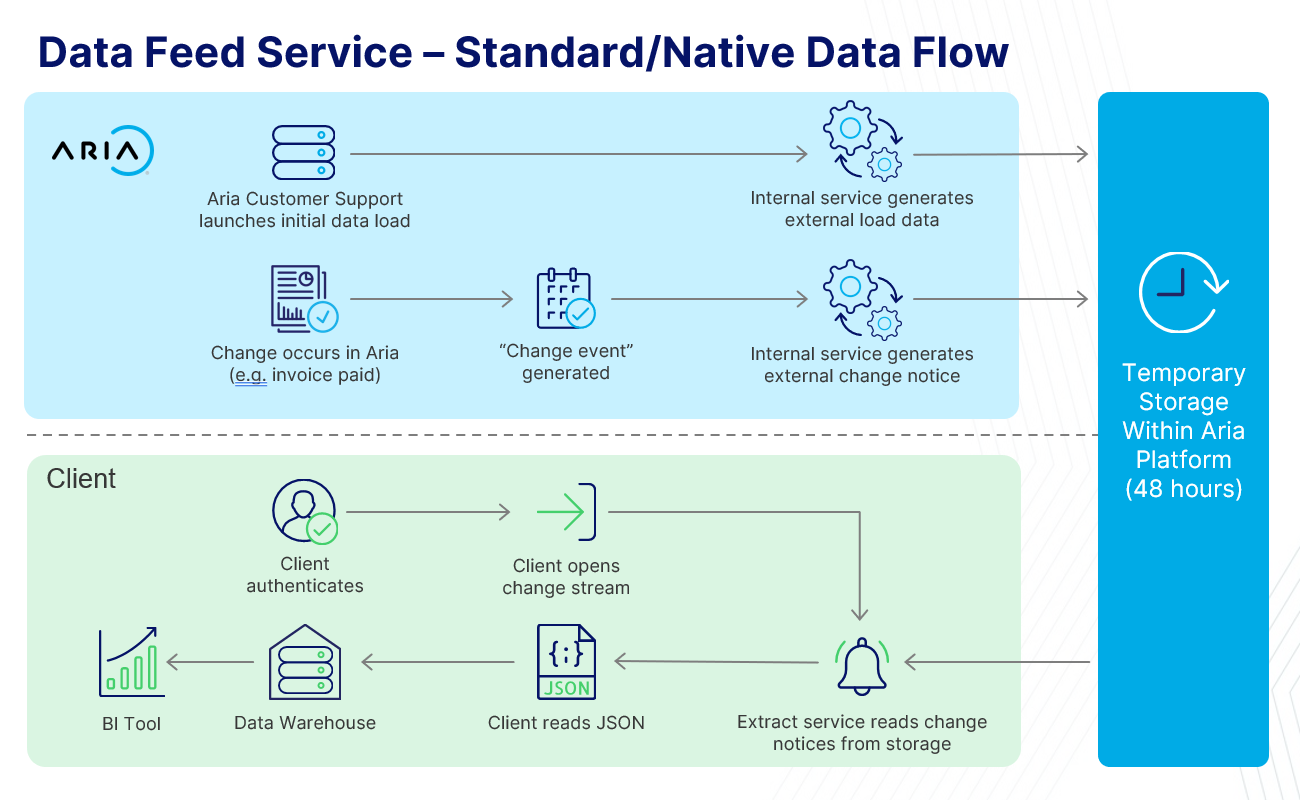Data Feed
Change Streams and Load Streams
Aria Data Feed provides two separate SSE feed services: The "Change Stream" and the "Load Stream." Both share all of the details covered in other Data Feed topics. An SSE client consumes the data from both feeds. The received SSE events from both feeds share the same structure, and they are described by the same Logical Model and formatted into JSON using the same rules.

Load Stream
The Load Stream will be the first feed your SSE client consumes when you initiate Aria's Data Feed Web Service. Events in the Load Stream all have the event type "load" and represent a snapshot of a specified subset of Aria client data, such as all account data, all financial data or all usage data.
To receive this data, you must submit a request to Aria Customer Support to launch an "extraction job" to generate a Load Stream with the desired data.
Change Stream
Events in the Change Stream describe changes to Aria data in near-real-time. Each of these SSE events is identified as one of three actions: "create," "update" or "delete." These actions map to an Aria data entity identified by the header (first) data line in the event. Update events include updated fields related to the data entity and may omit fields that have not changed.
Best Practices
Aria retains feed data for 48 hours.
- Aria recommends that you consume this data feed continuously. If that is not possible, data should be consumed as frequently as possible.
- User (Client) has responsibility and should persist the consumed data in their system(s), as it is retrieved.
- If you are pushing the data into a system where order of the data matters, then you must buffer the data in a datastore and order it there before sending to your downstream system. This will add some latency, but this is the best practice for ordering the data.
- If the order of data does not matter to your downstream system, then you do not need to buffer the data. This ensures better performance and no additional latency.